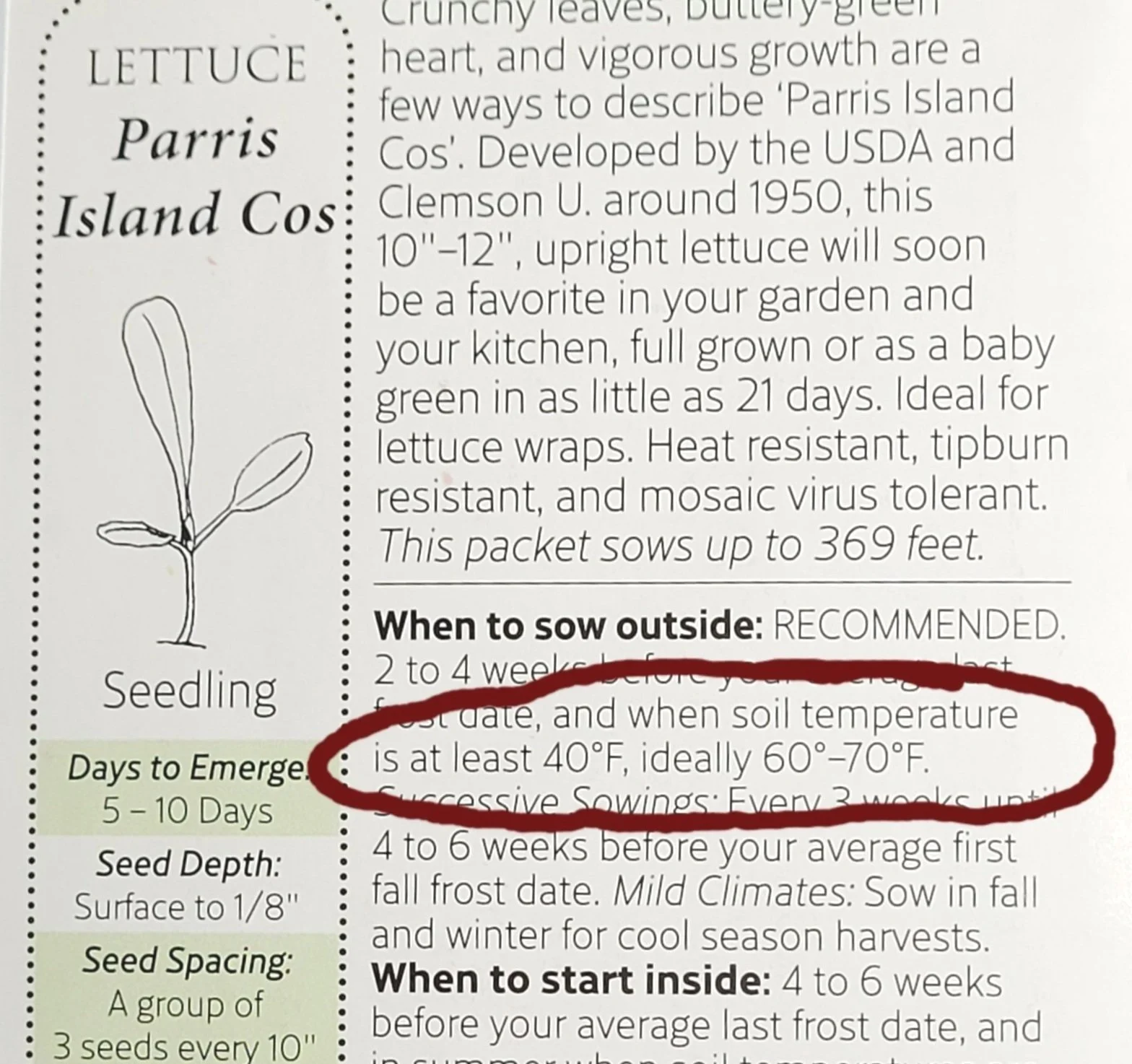Grow a Spring Vegetable Garden
Although winter is still upon us, with snow in the forecast, spring is almost here! That means getting ready for the spring kitchen garden! There are many vegetables and herbs that can be grown well before the last frost date. However, it’s critical to understand the timing as well as have weather protection supplies and a plan in place. With that, and a bit of luck (it is Colorado, after all), you can harvest delicious food from your garden before the summer growing season even begins.
WHAT IS THE SPRING VEGETABLE SEASON?
The spring vegetable garden consists of plants that grow best in cooler temperatures and will tolerate frost and/or a short freeze or snow. Most will germinate in soil temperatures anywhere from 40 degrees Fahrenheit to 60 or 70. The seeds won’t sprout if the soil is too warm, however. Soil thermometers are relatively inexpensive and are a useful tool for the kitchen gardener. With the inconsistent spring air temperatures, measuring the soil temperature is key for healthy plants.
Here in Colorado, we have two cool seasons for growing vegetables. Many of the same plants that are grown in the spring can also be grown in the fall. However, there are differences in sowing and growing cool-season vegetables in the fall and those will be covered in a later blog post.
If you’d like more information about local growing seasons, check out my Free North Denver Metro Growing Guide. This guide lists which vegetables grow in each season.
COOL SEASON VEGETABLES & HERBS
Some examples of cool season plants include:
Greens like lettuce, arugula, kale, spinach, cabbage
Root crops such as carrots, radishes, beets, potatoes, onions
Other vegetables and herbs like peas, broccoli, cilantro, fennel
Since the cool season growing time is short here in Colorado, choose fast-growing options. That means fewer days to maturity. Also, most greens can be harvested at the “baby greens” stage (just 21 days for Parris Island Cos romaine lettuce). Simply cut the outer leaves, but don’t snip the center ones. They’ll continue to grow and give repeat harvests throughout the spring and are referred to as “cut and come again”.
STARTING COOL SEASON PLANTS
Cool season plants can be grown from seed directly in your garden or transplanted out into the garden as starts. In general, root crops should be directly seeded in the garden because they don’t tolerate transplantation well. Crops that have a longer growing time (more days to maturity) should be started indoors before the ideal outdoor planting time. One example is broccoli but you could also start salad greens indoors for a quicker harvest. Most local nurseries offer cool season vegetable starts for sale at the appropriate time if you are unable to start seeds indoors.
How do you know exactly when to seed or transplant cool-season vegetable and herb plants?
Typically, seed packets have this information printed on them, or look at the seed provider's website. For example, this Parris Island Cos lettuce from Botanical Interests has the recommended soil temperature listed on the seed packet.
For plants that are completely harvested at once, like head lettuces or root vegetables, consider succession planting. Succession planting is staggering seed sowing by a week or two so that harvests are continual throughout the season rather than happening all at once.
PROTECT FROM EXTREME SPRING WEATHER
Although cool-season plants will tolerate a brief freeze and/or snow, there are times when they need some protection. For example, a lettuce plant will probably survive a hard freeze and/or heavy snow but the leaves would be damaged and turn mushy. If you know the weather is on the way, either harvest (leaving the roots) or cover with frost cloth, blanket, or bucket. Once it passes, uncover it as soon as possible so that the plant doesn’t get too warm.
As the weather warms, it may be necessary to protect your cool-season plants from the heat and sun. Shade cloth and mulch can help get them to a harvest before summer fully sets in. When growing conditions are not ideal, the plants can “bolt” which is a stress reaction triggering reproduction. That often means sprouting flowers and setting seeds. Unfortunately, this can cause the vegetable’s flavor to change to something less palatable or even bitter. Once plants bolt, there’s no going back so it’s best to simply pull the plant in preparation for warm and hot season plants.
Growing a spring kitchen garden in Colorado can be tricky. But, getting the timing right is the first step to success. The unpredictable Colorado weather always complicates gardening matters but having a plan and supplies beforehand will help you protect them. There will be spring snows and there will be hail but cool weather vegetable plants can be surprisingly resilient. The reward is the sweet taste of spring in that first harvest from your garden!



